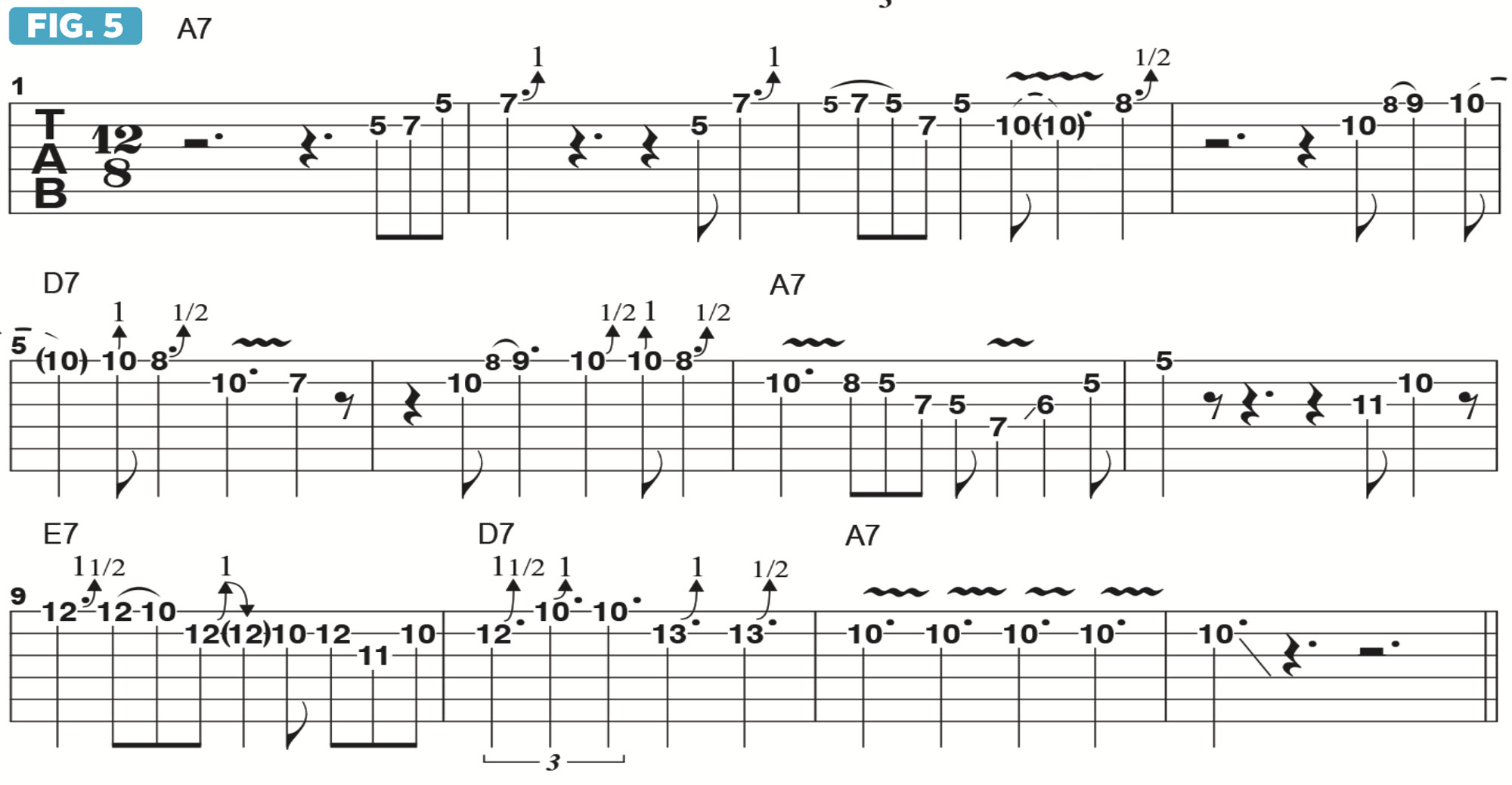How to play the blues like B.B. King
Kirk Fletcher pays tribute to the King of the Blues with a lesson that explores the magic of the legendary bluesman's style

The guitar player who influenced the greatest number of Chicago blues guitarists, though he got his start in Memphis, is B.B. King.
By the early Fifties, B.B. had many records out, which were very accessible to everyone in Chicago, and during that time he played in the city a lot and had a big influence on other great players, such as Buddy Guy, Magic Sam and Otis Rush.
As a tribute to B.B., I’d like to dedicate this column to offering some examples of his signature licks and phrasing.
One particular earmark of B.B’s playing is something you’ll often hear in his song intros; a perfect example is the way in which he kicks off the blues classic, Sweet Little Angel, on Live at the Regal.
Figure 1 is a phrase along the lines of this intro, in the key of A. Starting on the 5th, E, I move up to the 6th, F#, followed by the A root and the second, B, which I then bend up a whole step to the major 3rd, C#. The phrase then wraps up back on the 5th, E. Figure 2 places this intro within the context of a three-bar opening solo statement.
In Figure 3, I elaborate further by following that simple intro with more complex phrases in bars 2 and 3. These phrases fall between the 10th and 12th frets and represent what many refer to as the “B.B. box,” simply because licks and phrases like these are universally accepted as representative of B.B’s individual sound and style.
When I play phrases like these, I can’t help but remember how happy and excited I was when I first heard B.B. play. To this day, that great feeling inherent in his soloing still evokes pure happiness and joy. I can imagine a young Buddy Guy hearing this stuff on the radio and being fascinated and immediately hooked.
All the latest guitar news, interviews, lessons, reviews, deals and more, direct to your inbox!
Vibrato seems to be something of a lost art – all of the classic guitarists from the ’50s and ’60s had their own signature vibrato
B.B. seemed to play with a rather light pick-hand touch. When I do this, I feel like my tone is better and clearer. I grew up playing a Stratocaster, so I had to do all I could to get a fatter sound to get closer to B.B.’s Gibson 335/345 sound.
Additionally, when you land on a note at the end of a phrase, add a nice big vibrato, striving to emulate the sound of the human voice. Vibrato seems to be something of a lost art, because all of the classic guitarists from the Fifties and Sixties that we love, such as B.B. King, Albert King, Albert Collins, Otis Rush, Eric Clapton, each had their own signature vibrato. A great vibrato will set you apart and let the listener instantly know who is playing.
In Figures 4 and 5, I apply these B.B.-isms to a moderate shuffle groove. Once you have these phrases down, try expanding upon them and inventing some twists and turns of your own. This is my last installment of Blues Truth for now.
I hope you’ve enjoyed these columns as much as I have enjoyed putting them together. Be on the lookout for my forthcoming new album, Heartache by the Pound, and I’ll see you out on the road!




